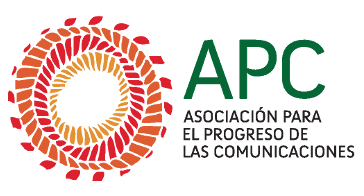Publicado el
Actualizado por última vez en
With the focus at Tunis largely on who controls the Net, and the
far-from-sophisticated control mechanisms of Tunisian society, the issue of
what the Net can — and is — doing for the excluded in the planet might
have taken a back seat. Disparity in accessing the levers of communication is markedly sharp. But interesting stories are coming in about what’s possible from various parts of the globe — href=“http://www.ipsterraviva.net/tv/tunis/viewstory.asp?idnews=385”>Africa, in the field of education, href=“http://www.ipsterraviva.net/tv/tunis/viewstory.asp?idnews=383”>the American Indian indigenous people, and beyond. Undeniably, the harsh reality needs to be acknowledged and dealt with too…. With the focus at Tunis largely on who controls the Net, and the far-from-sophisticated control mechanisms of Tunisian society, the issue of what the Net can — and is — doing for the excluded in the planet might have taken a back seat. serve the people? is the question raised by Marty Logan via Tunis. Logan writes: “Now that the worlds powers have agreed to stop squabbling over control of the Internet (for now), will the more than 10,000 people here for this week’s United Nations forum focus on creating an information society for all people?”
Some figures from this report: Roughly the same number of people use the Internet in the world’s eight economic giants as in the other nations combined — 429 million users in the former versus 444 million in the latter, says the United Nations.
See ITU page for some facts and figures about the global digital divide, or how skewedly distributed cyber-facilities are in different parts of the globe.
Another report, also by Mithre J. Sandrasagra is titled href=“http://www.ipsterraviva.net/tv/tunis/viewstory.asp?idnews=385”>Education A little could go a long way and notes that two African leaders launched a public appeal last Wednesday for support to a global fund for community-based communication projects. IPS wrote: “President Abdoulaye Wade of Senegal and President Olusegun Obasanjo of Nigeria launched the appeal for increased funding for the href=“http://www.dsf-fsn.org/en/15c-en.htm”>Global Digital Solidarity Fund (GDSF). Few, however, attended the meeting they addressed.” We’re told that the “fund has so far gathered 5.5 million euros (6.6 million dollars) from its 22 members that include just nine countries. The others are international organisations, cities and provinces.”
More interesting details: The fund has had some success in Africa. The href=“http://www.google.co.in/search?hs=0Os&hl=en&client=firefox&rls=org.mozil...> Association for African Solidarity based in Burkina Faso has used money from the fund to introduce broadband connectivity at HIV/ AIDS clinics. Patients now have up to date medical information, and also access to specialists in other countries. The African Virtual University (AVU) was established in 1997 with funding from the World Bank. It now has more than 3,000 students in 18 countries.
The href=“http://www.google.co.in/search?hs=R6C&hl=en&client=firefox&rls=org.mozil...>Sushiksha Project in India funded by the href=“http://www.iisd-ngo.org/”>Institute for International Social Development (IISD) based in Britain has “involved more than 50,000 slum dwellers in a literacy programme” where ICT tools help build individual capacity for development. See the href=“http://www.iisd-ngo.org/?view/programs/item/742”>IISD page on Sushiksha. The Food and Agriculture Organisation has launched a scheme to help rural communities with access to information to improve farming and marketing methods, and to mitigate the effect of natural disasters. [Not sure if the IISD project touches “more than 50,000 slum-dwellers”, as mentioned above. It’s a not-for-profit company based in Kolkata (India), and not in Britain.]
Another report href=“http://www.ipsterraviva.net/tv/tunis/viewstory.asp?idnews=383”>Navajos go global: an indigenous web builds up by Marty Logan (again, href=“http://www.ips.net”>IPS) reports that the indigenous Navajo people of the southwestern United States are now using the Internet to reconnect to their traditional culture, and rebuild confidence. Check href=“http://www.navajo.org/”>The Navajo Nation. IPS reminds us that after WSIS I in Geneva in 2003, a group of indigenous people identified obstacles and challenges to their peoples’ equitable participation in the information age. These included poverty, which reduces access to the Internet; fear that the new technologies would force them to conform to one model of living; lack of money to pay the high costs of training; and a shortfall of computer software in indigenous languages.
Meanwhile, two portals exist on indigenous people’s issues, but both are operated by governments, Canada and Australia, said Deer, a member of the Mohawk nation from Canada.
[Check The Gathering of Nations which takes you to Native American web site links: “Shop Native, Native Portal Sites and Native Services”… and more.
From Bolivia, IPS/TerraViva has this news item that says href=“http://www.ipsterraviva.net/tv/tunis/viewstory.asp?idnews=376”>Information highway blocked by rural poverty, underdevelopment (in Bolivia). It explains how “the proliferation of cybercafés in Bolivia’s largest cities, offering Internet access at relatively modest rates, contrasts sharply with the slow advance of this technology in rural areas, which depends on sporadic initiatives headed up by the private sector or civil society.” IPS/Terraviva says: “There are barely 62,000 Internet connections today in Bolivia, a country with a population of 8.2 million people — as well as an illiteracy rate of 25.7 percent in the countryside and 6.44 percent in the cities — according to the most recent census, conducted in 2001. Indigenous people account for 62 percent of the population, and that proportion rises to almost 70 percent in the centre of the country and in the mountainous western regions. In rural areas, indigenous languages are spoken by 72 percent of inhabitants.”
It adds that for the areas of Bolivia where Internet access is possible, Entel and the Royal University in La Paz have created a “virtual high school” programme that allows people to complete their secondary education through computer-based distance study.
Another initiative currently underway, with funding from the Andean Development Corporation (the financial arm of the Andean Community of Nations), the Eco Pueblo Foundation and Aquino University of Bolivia, is a computer centre in the town of Calamarca, 80 km from La Paz, where the local Aymara indigenous children and adolescents are provided with access to information technology.


